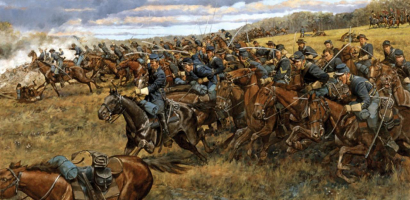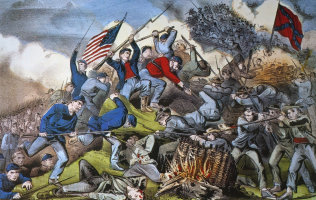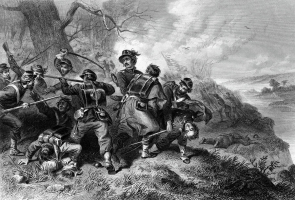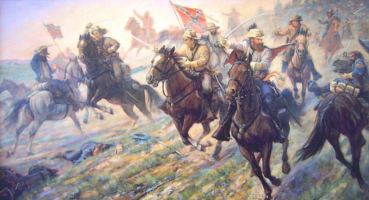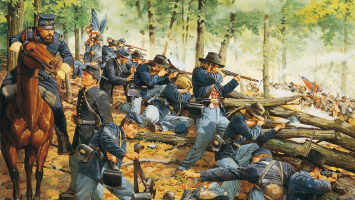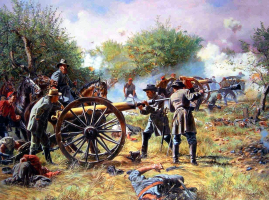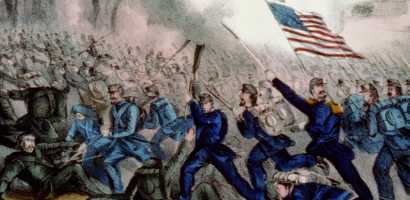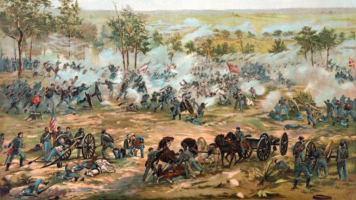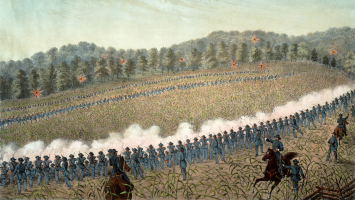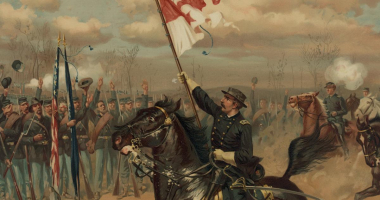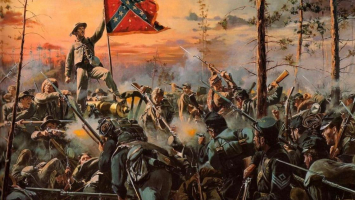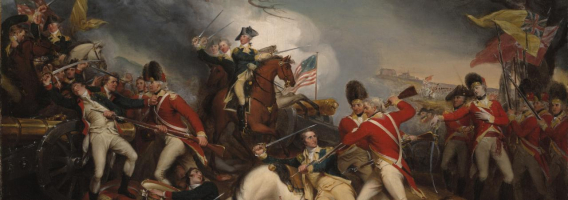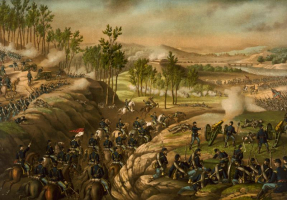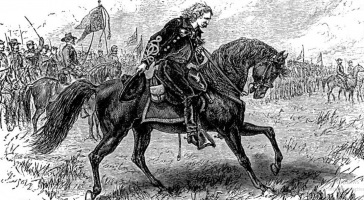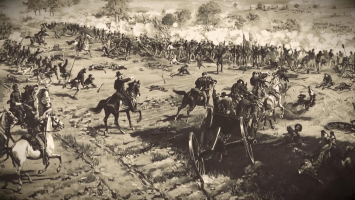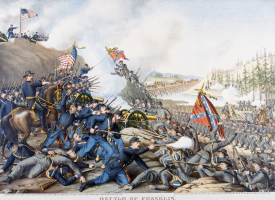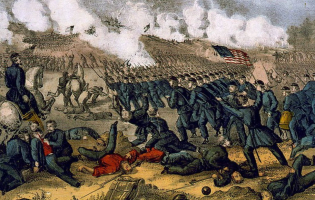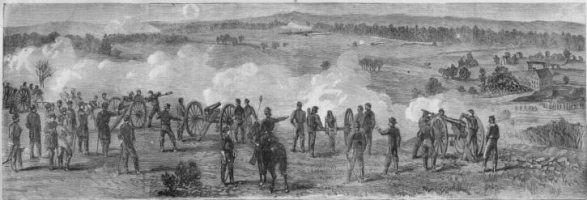Top 5 Facts About The Battle of Olustee
The Battle of Olustee, also known as the Battle of Ocean Pond, took place on February 20, 1864, in Baker County, Florida, during the American Civil War. During ... read more...the war, it was the largest engagement fought in Florida. Here are the 5 facts about the Battle of Olustee you should know.
-
One of the most interesting facts about the Battle of Olustee is that it was the largest battle in Florida during the war. On February 20, 1864, at the Battle of Olustee, the greatest Civil War battle in Florida, a Confederate force led by General Joseph Finegan decisively beats an army led by General Truman Seymour. The victory gave the Confederates control of the interior of Florida for the rest of the war.
Union General Truman Seymour had landed troops in Jacksonville with the primary goal of disrupting the Confederacy's food supply. Truman Seymour's 5,500-man force proceeded from Jacksonville deep into the state, encountering no resistance. He continued against orders towards the state capital of Tallahassee, expecting that he would only fight the small Florida militia. Confederates in Charleston deployed reinforcements led by General Alfred H. Colquitt, and the two armies clashed near Olustee's Ocean Pond. As he moved toward Lake City on February 20th, he came into Brig. Gen. Joseph Finegan's 5,000 Confederates were positioned in open pine woods near Olustee. Finegan dispatched one infantry brigade ahead to meet Seymour's advance divisions.
As Finegan committed the rest of his reserves to the conflict, the Union line crumbled and began to flee. The majority of the injured and captured black Union soldiers were killed by Confederate troops. Following the Union's setbacks, Northern leaders questioned the need for further Union intervention in the militarily inconsequential state of Florida.
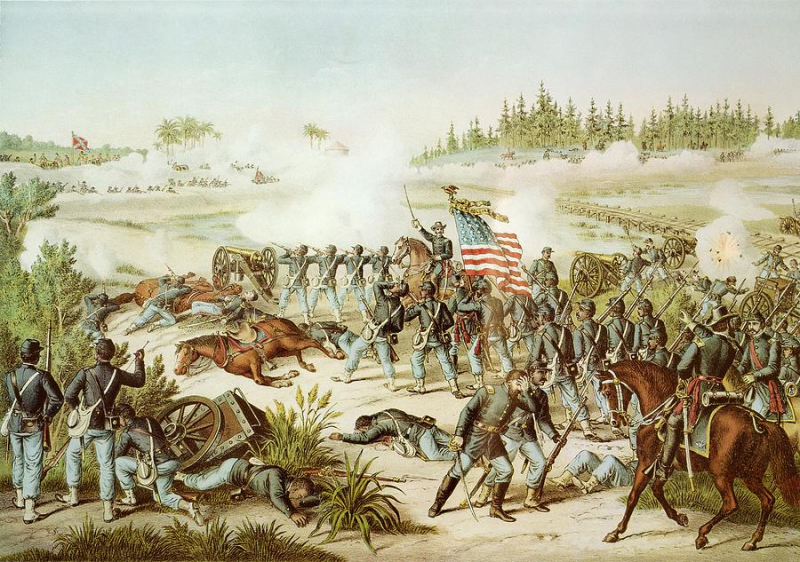
blackpast.org 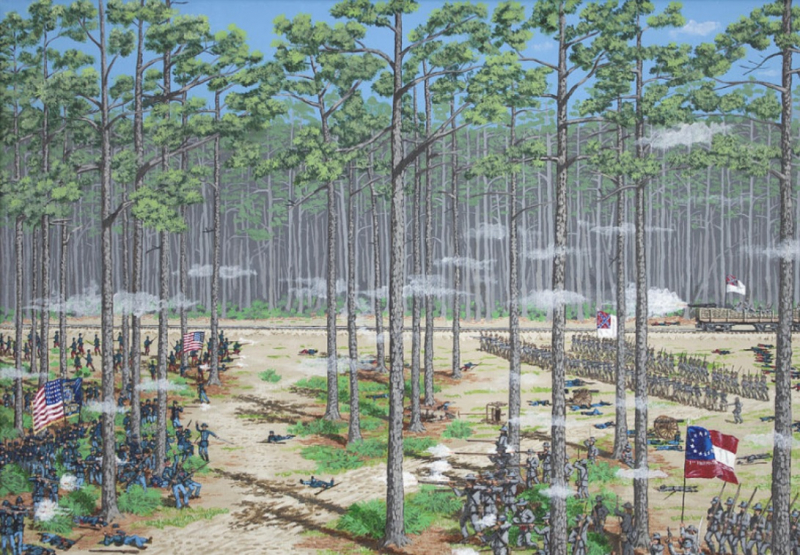
fineartamerica.com -
Another fact is that Truman Seymour underestimated the Confederate forces at Olustee. Seymour led his 5,500 troops in the direction of Lake City, following the Florida, Atlantic, and Gulf Central Railroad. The Union forces approached General Finegan's 5,000 Confederates entrenched near Olustee Station around 2:30 p.m. on February 20. Seymour made the mistake of presuming he was facing Florida militia groups he had previously easily routed and committed his troops piecemeal to the conflict. During the afternoon, Finegan and Seymour each reinforced their engaged battalions, and the battle took place in open pine forests. The Union forces launched an offensive but were defeated with ferocious barrages of rifle and cannon fire.
The battle continued all afternoon until the Union line crumbled and began to retreat when Finegan sacrificed the rest of his reserves. Finegan did not take advantage of the retreat, allowing the majority of the retreating Union men to reach Jacksonville. The Confederates did make one more attempt to engage Seymour's forces just before dusk, but they were repulsed by parts of the 54th Massachusetts Volunteer Infantry Regiment and the 35th United States Colored Troops, both of which were made up of Black soldiers.
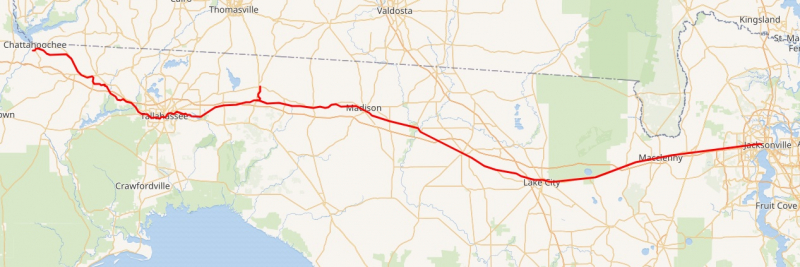
en.wikipedia.org 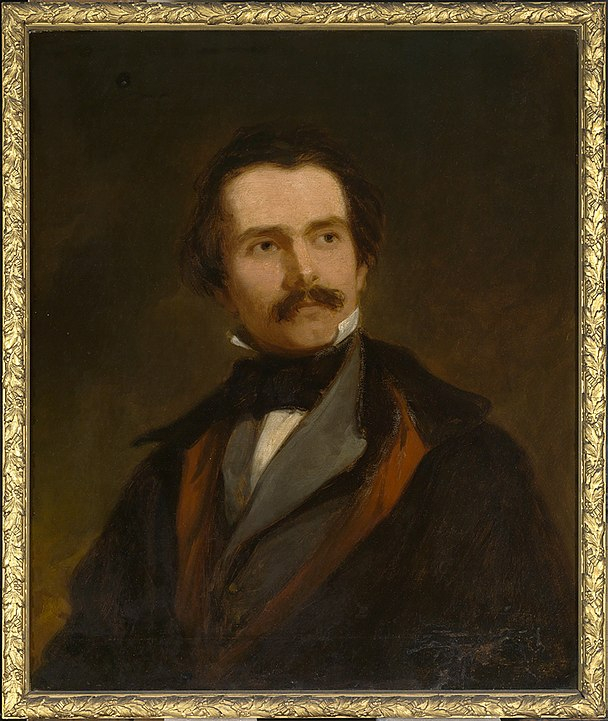
Truman Seymour -en.wikipedia.org -
One of the most interesting facts about the Battle of Olustee we want to introduce to you is that Truman Seymour commanded the Union troops at the Battle of Olustee. Truman Seymour (September 24, 1824 – October 30, 1891) was an exceptional painter as well as a career soldier. During the American Civil War, he served in the Union Army, rising to the rank of major general. He took part in the Battle of Fort Sumter. He led the Union troops in the Battle of Olustee, Florida's sole major Civil War battle.
The newly constituted District of Florida was assigned to Seymour by Maj. Gen. Quincy A. Gillmore, commanding commander of the Department of the South. In February 1864, the division led an expedition to Florida, landing and capturing control of Jacksonville. Gillmore then proceeded to South Carolina, leaving Seymour in tactical command.
The battle took place roughly 40 miles west of Jacksonville, in the hamlet of Olustee. The ensuing battle resulted in some of the war's highest percentage losses of any major combat. Despite inflicting about 1,000 casualties, Seymour's division received nearly 2,000 in return. General Seymour's defeated force returned to Jacksonville, where Union troops maintained control until the war's end.
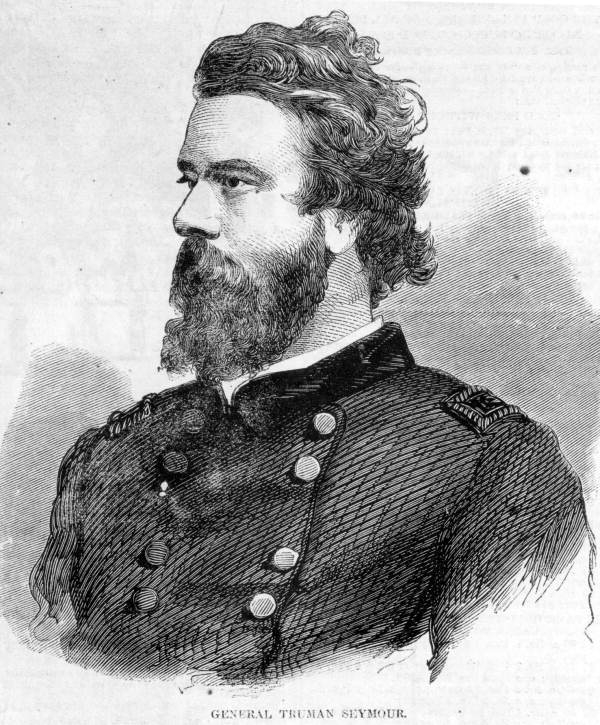
floridamemory.com 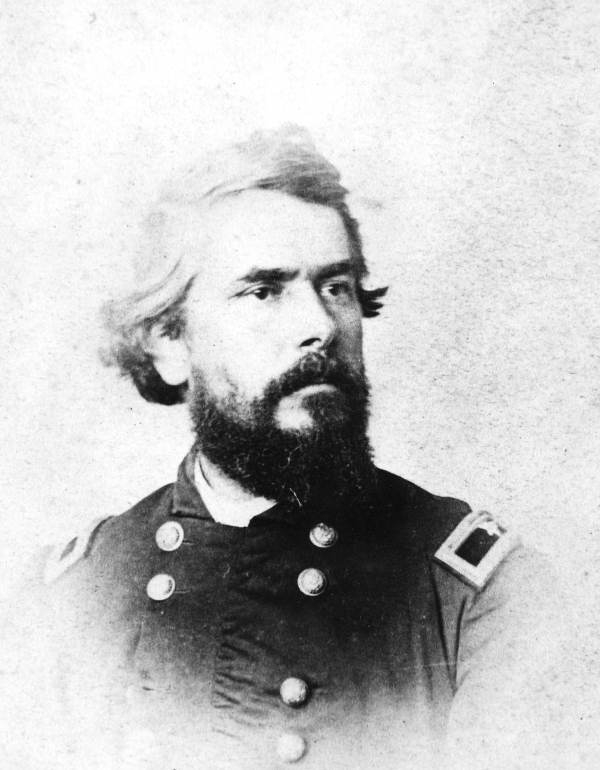
floridamemory.com -
Another fact is that the Battle of Olustee was indeed one of the bloodiest in terms of casualties. Union casualties totaled 203 soldiers killed, 1,152 wounded, and 506 missing, for a total of 1,861 men (about 34%). Confederate casualties were lower: 93 dead, 847 wounded, and 6 missing, for a total of 946 casualties (approximately 19%). Union forces also lost six pieces of artillery and 39 captive horses. With 265 casualties per 1,000 troops, this battle was the Union's second bloodiest of the war. Soldiers on both sides had seen the great battles in the eastern and western theaters of war, but many of them wrote in letters and diaries that they had never seen such horrific fighting. The Confederate dead were interred at nearby Lake City's Oaklawn Cemetery.
The 54th Massachusetts was ordered to countermarch back to Ten-Mile Station on February 22, when the Union forces were still retiring to Jacksonville. The locomotive of a train carrying wounded Union soldiers had broken down, putting the wounded in jeopardy. When the 54th Massachusetts arrived, the soldiers tied ropes to the engine and coaches and manually hauled the train three miles to Camp Finegan, where horses were secured to assist in pulling the train. Following that, the train was pulled by both men and horses for a total distance of 10 miles to Jacksonville (16 km). The train took 42 hours to travel that distance.
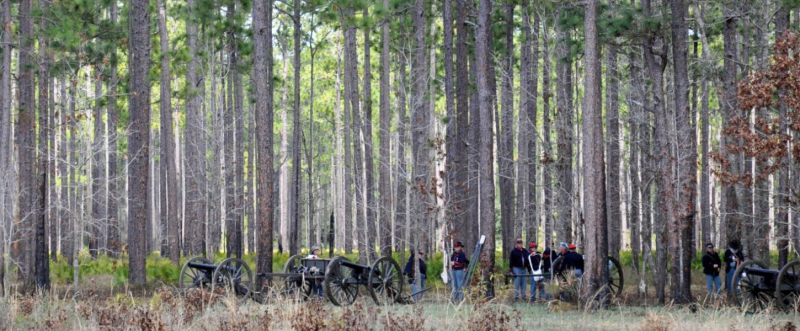
Olustee Battle field -floridastateparks.org 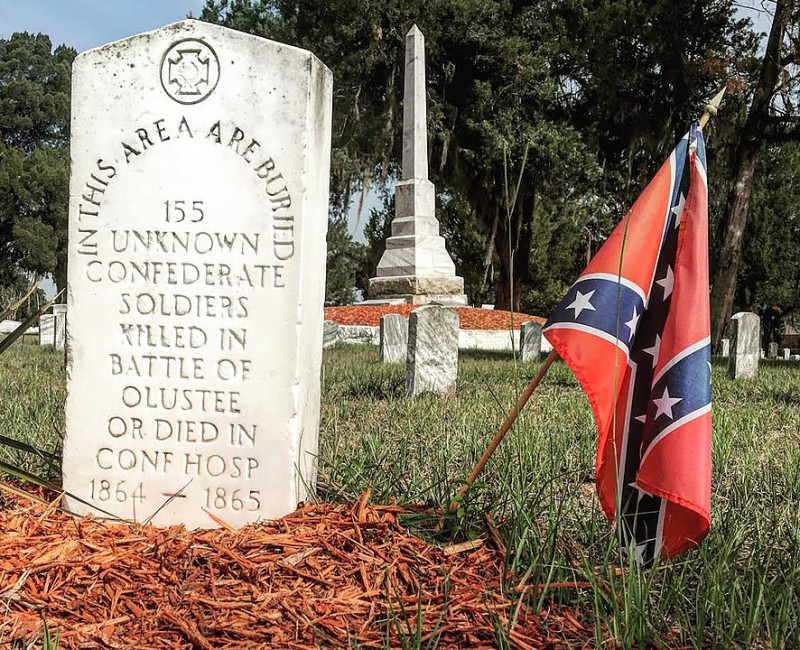
Graves of unknown Confederate soldiers -en.wikipedia.org -
One of the most interesting facts about the Battle of Olustee is that the battlefield of Olustee is still commemorated today. The Olustee Battleground Historic State Park, which is part of the Florida State Park system, commemorates the battlefield today. This park is located on US Highway 90 within the Osceola National Forest. The battlefield is part of a national forest and is partially protected as a state park. A portion of it is privately owned land on the south side of US Highway 90. However, there is still no memorial to the Union soldiers that died in this combat as of 2022.
Every Presidents' Day weekend in February, an annual historical reenactment is held on the battlefield. Thousands of reenactors from all across the United States, and even from other countries, have taken part over the years. They are taken to see demonstrations and hear historians describe various aspects of the war and life in the United States in the 1860s. On Friday, Saturday, and Sunday, the event is free to the public. There are various sutler tents selling Civil War memorabilia. The bouts will be held on Saturday and Sunday.
The Olustee Battlefield Historic State Park Citizens Support Organization, the Florida Department of Environmental Protection - Recreation and Parks, the USDA Forest Service - Osceola National Forest, and The Blue-Grey Army, Inc. are all co-sponsoring the reenactment.
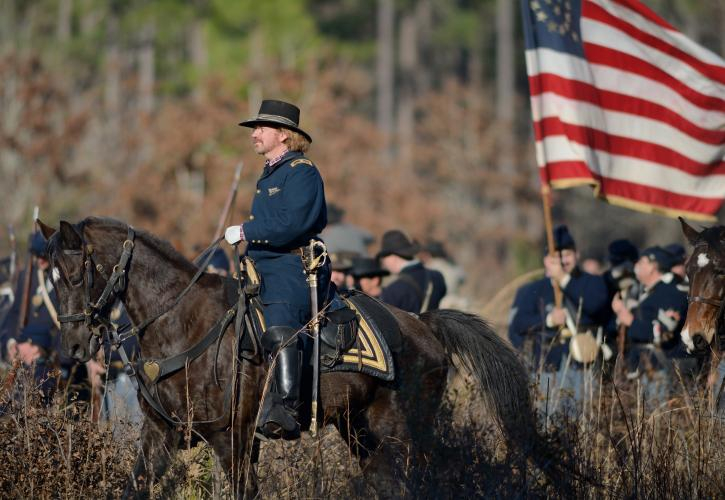
floridastateparks.org 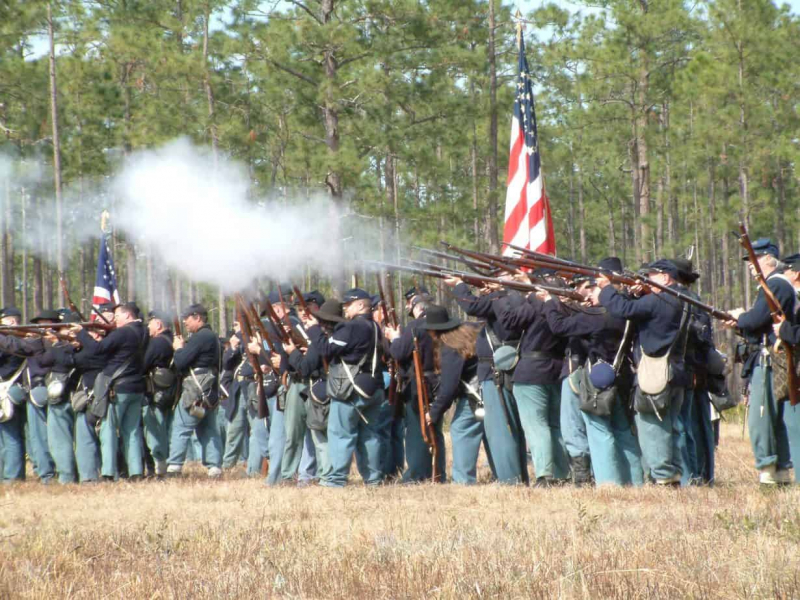
floridarambler.com







